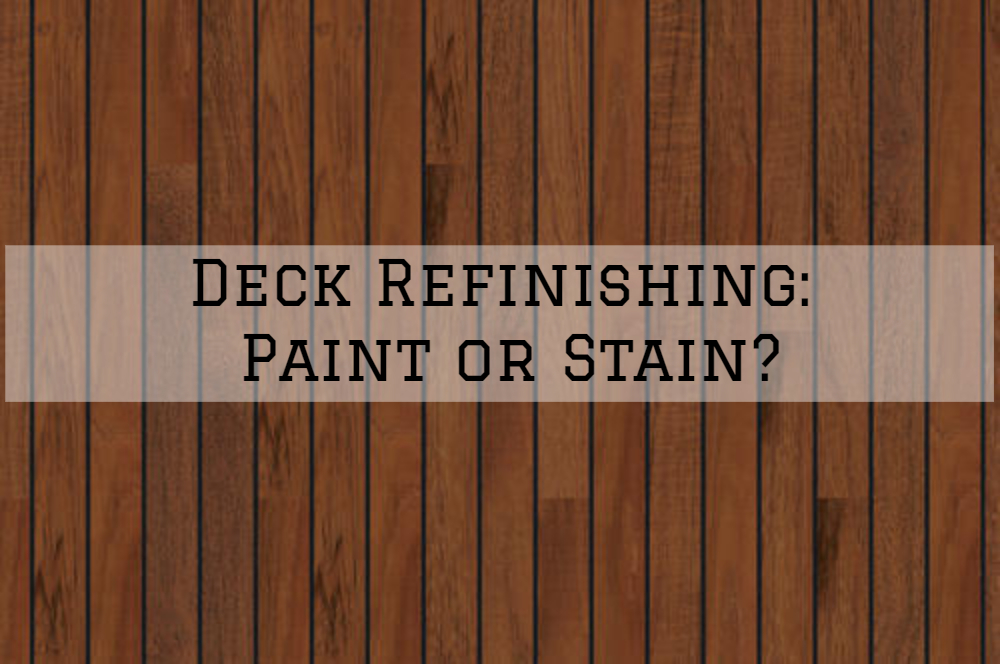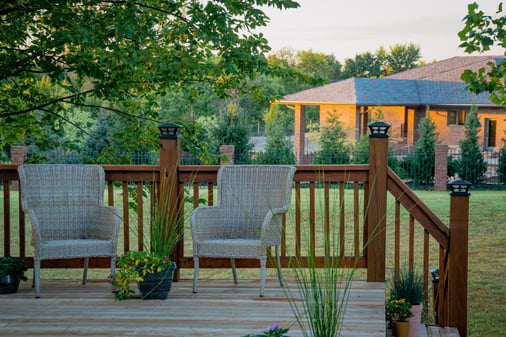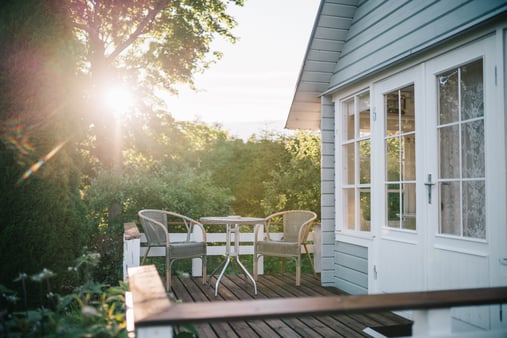Deck Refinishing in Omaha, NE: Should You Paint or Stain?
October 17th, 2019 | 3 min read
By Bill Carlson

Having a deck is a huge luxury, especially when the weather is beautiful. It's like being able to extend the comforts of indoors, outdoors. Most homeowners want to do all they can to ensure that the lifespan of their deck is prolonged. One way to do this is to finish your deck.
But do you opt for deck paint or stain? As with everything, there are pros and cons to consider. Our experts at Brush & Roll Painting in Omaha, NE, are well-versed in what makes a beautiful deck and which option will be best for you and your home. Before you make a decision, read on to learn more about the differences between painting and staining a deck.
Deck Painting Pros
1. Aesthetic
The look of a crisp, white-painted deck is undeniably striking. And with paint, you don't have to just opt for white. You can paint your deck any color you want! Some homeowners and professionals prefer a painted deck because it also covers wood grains and imperfections better than a stain.
2. Longevity
If you choose a quality painter to paint your deck, you can expect the paint job to last about 10 years. Painting might be a longer process than staining, but it does provide longer-lasting protection than a stain against mold and sun damage.
3. Easy to Clean
When it comes to cleaning your deck and washing dirt off, paint comes out on top. It's usually easier to clean a painted surface than stained wood that's rougher, and anything that makes cleaning easier is a huge bonus!
Deck Painting Cons
1. More Labor-intensive
You'll always want to hire a professional when it comes to painting your home, and that includes your deck. The process of painting your deck is much more involved than simple staining. Professionals will need to treat your deck, add primer, paint, and seal it.
2. Shows Wear Easier
A superior paint job will last a long time, but when painted surfaces do begin to show wear, it's much more obvious. White paint or a lighter paint color especially will show peeling and chipping.

Deck Staining Pros
1. Instant Update
We're big fans of easy, instant updates. Staining your deck definitely falls into this category as it gives your whole home a facelift.
2. Enhance Natural Beauty
If you love a rustic vibe for your deck, sticking to a natural wood grain might be the best option for you. A stain will still let the natural wood grain of your deck come through and maintain its natural beauty. Stains also soak into the wood of your deck and don't peel or trap water as paint does.
3. More Budget-friendly
Staining is typically more affordable than painting. The prep time and materials necessary for staining a deck aren't as much as when you have your deck painted.
Deck staining cons
1. Transparent
Because stains are transparent, they don't protect the wood. Most stains don't form a barrier against moisture, and they're not resistant to UV rays. Paint will help protect the wood of your deck from sun damage, mildew, and rot.
2. Longevity
Stains typically have a shorter shelf life than paint. Because of that, you'll likely need to have your deck restained every few years.
When Should You Repaint Your Deck?
Deck painting might be a great option if you’re looking for a little more
flexibility with color options. Also, if you have an older deck that has
surface imperfections and flaws, you need to hide, consider painting.
Types of Deck Staining
There are generally three types of stain based on their color
intensity (i.e., Solid stain, semi-transparent stain, and transparent
stain).
-
Solid stains: Solid stains create a darker, uniform look and cover most of the wood’s natural elements like paint. They provide the highest level of surface protection compared to the other two.
-
Semi-transparent stains: Offering a touch of color but allowing the wood’s unique characteristics and patterns to shine through, semi-transparent stains provide weatherproofing and UV protection. They’re the most common types of exterior wood stains.
-
Clear wood stains: This type of stain is best for high-end wood decks, such as rich cedar and redwood. In this case, you want to preserve the natural color of the wood and showcase its beauty. They provide the lowest level of surface protection, but some of them have UV protection as well as mold and mildew fungicides.
When Should You Stain Your Deck?
Deck staining might be your best option if your deck is still relatively new or at least in superb physical condition. Also, if you highly appreciate the natural beauty of the wood and would like to showcase it, consider repainting. However, if you have an older deck with plenty of surface imperfections, consider having your deck painted.
The Bottom Line
Both staining and painting are viable options for your deck finishing project in. If you need more color options or to cover surface imperfections, choose painting. However, if you admire the natural beauty of the wooden deck, consider a semi-transparent stain.
At Brush & Roll Painting, we know that home painting is a serious investment. We also believe that any paint job is only as good as the prep. If you want a quality paint job that will stand the test of time, give us a call at (402) 932-9764 or schedule an estimate online.
Bill is the owner and operator of Brush & Roll Painting.

